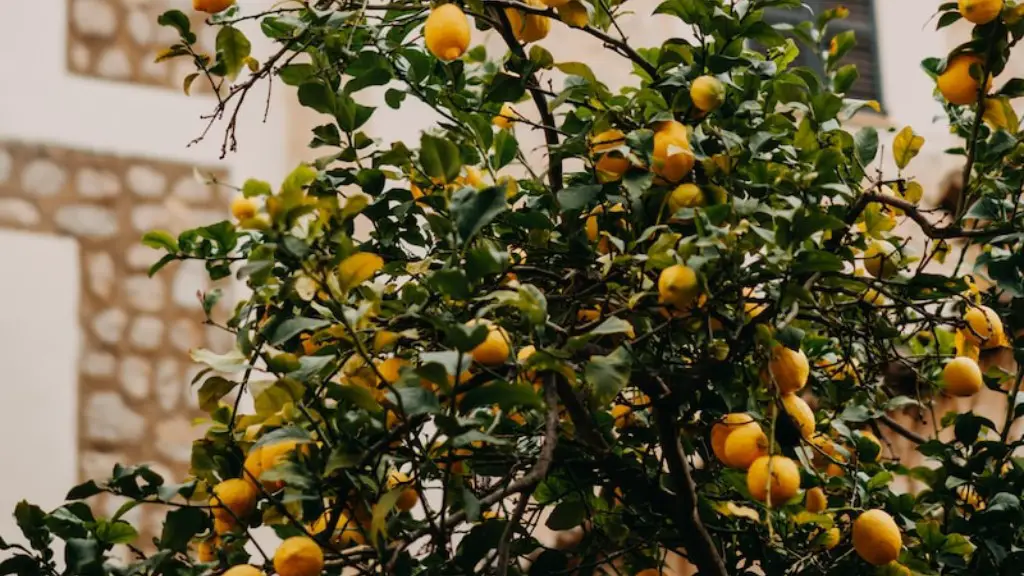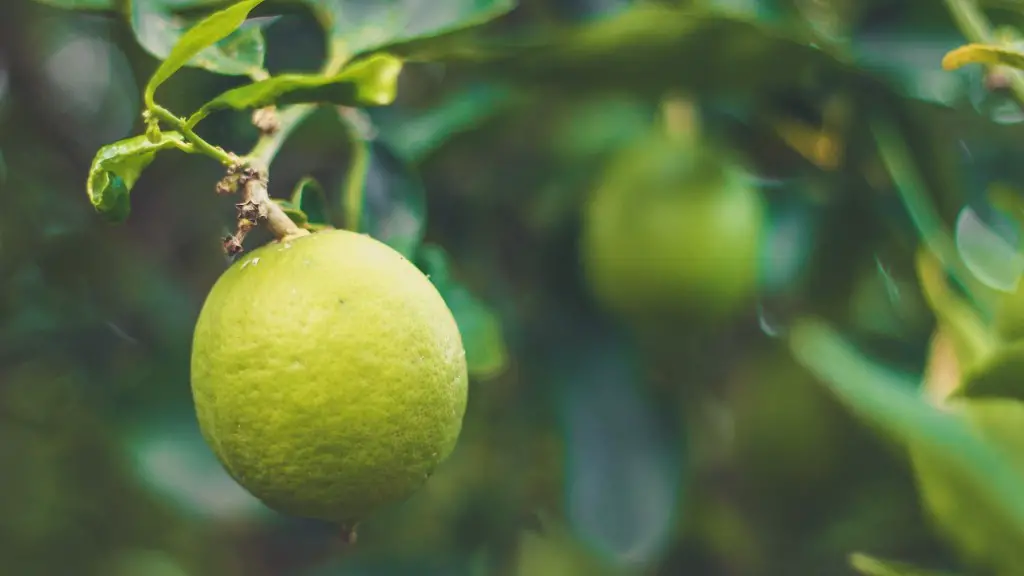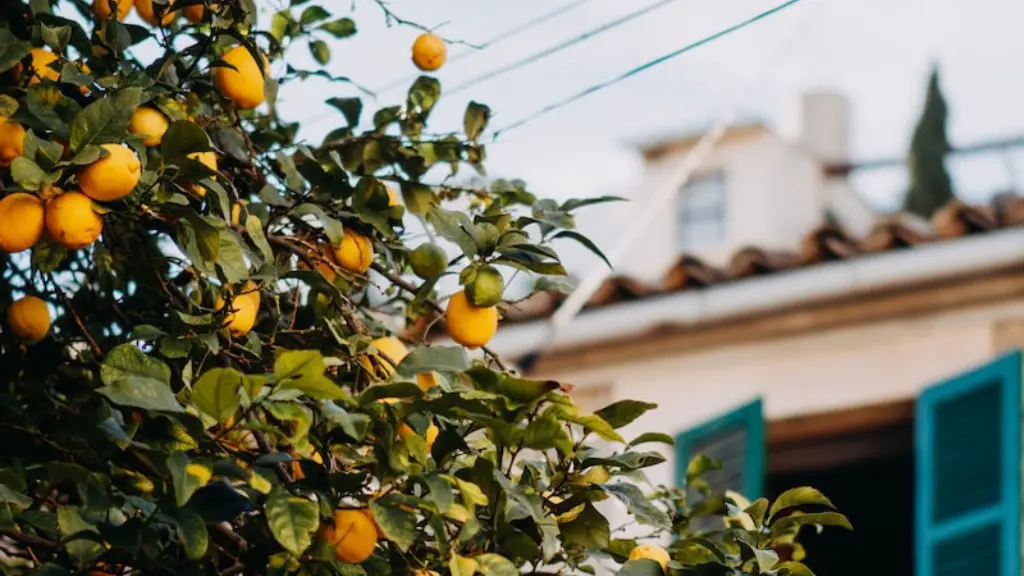Water Thoroughly
Avocado trees are very sensitive to underwatering and overwatering. It is important to water when the top one to two inches of soil becomes dry. Water thoroughly until water runs out of the drainage hole at the bottom of the pot. During the summer months, it may need to be watered every five to seven days. During the winter months, it may only need to be watered once every two to three weeks. Outdoor avocado trees have well-developed roots, making them more resistant to drought, whereas indoor avocado trees need frequent watering to thrive.
Light Requirements
An indoor avocado tree needs at least six to eight hours of indirect sunlight to grow and maintain a healthy foliage. If the tree doesn’t get enough sunlight, its leaves will turn yellow and fall off. To maintain its foliage, the tree should not be placed in direct sunlight or underneath a fan or air conditioner.
Fertilizing
Indoor trees need to be fertilized every two to three months throughout the year. Choose a fertilizer customized for avocado trees or a balanced liquid fertilizer with a 10-10-10 or 10-20-10 N-P-K ratio. Before applying the fertilizer, make sure the soil is wet. Avoid fertilizing in summer months to reduce the risk of burning the leaves and roots due to the amount of heat.
Pruning
Pruning an indoor avocado tree helps to maintain its shape, health, and productivity. Pruning an indoor avocado tree has two objectives – first, to remove dead or diseased branches and second, to provide a bushy and productive tree. Prune by cutting off the top of the main stem. This will encourage lateral branching and result in a denser, fuller tree. Remove any dead or damaged branches with sharp garden shears or pruners.
Humidity
Avocado trees prefer humid climates and dry quickly when exposed to air conditioned indoor environments. To maintain the ideal humidity for an avocado tree, mist the leaves with a water bottle every few days or put a humidifier in the same room as the tree.
Repotting
Repotting an indoor avocado tree every two to three years helps to refresh its soil and stimulate growth. Before repotting, check the roots for any damage. If the roots are wet or slimy it may be a sign of root rot. If this occurs, repot the tree in fresh soil and prune away any dead or damaged roots.
Choose a new pot that is one to two inches wider and deeper than the current pot. Fill the bottom of the pot with fresh, fast-draining potting soil and carefully remove the tree from the current pot. Trim the roots with sharp shears if they are protruding from the current pot and place the tree in the new pot. Fill the remaining space in the pot with fresh potting soil and water thoroughly.
Temperature
Avocado trees prefer temperatures between 60 and 80 degrees Fahrenheit. Temperatures below 40 degrees Fahrenheit can damage the tree and temperatures over 90 degrees Fahrenheit can lead to wilting leaves and root scorching. Keep the tree away from cold drafts and windows and make sure to move it further away from open windows or air conditioners during the summer months.
Pest Control
Insect pests such as aphids, mealybugs, caterpillars, and scale insects can affect the health of an avocado tree. Inspect the leaves, branches, and trunk regularly for pests. Early detection and treatment can help to prevent serious damage to the tree. Be sure to use organic or homemade products when treating pests.
Protecting From Cold
Avocado trees are very sensitive to cold and the temperatures inside the home can drop during the winter months. To protect the tree from cold temperatures, create a barrier around the balcony or porch where the tree is kept using plastic sheeting, burlap sacks, or blankets. The barrier will help to keep cold air away from the tree and help it survive the winter.
Soil Conditions
The ideal soil conditions for an indoor avocado tree are loose, well-draining soil with a pH range of 5.5 to 6.2. The soil should be light and airy, allowing for air and water to penetrate the soil and reach the tree’s roots. If the soil has a pH that is too low or too high, add organic matter to adjust the pH level.
Fungal Disease Prevention
Avocado trees are susceptible to fungal diseases such as root rot and powdery mildew. To prevent these diseases, it is important to keep the soil damp but not soggy. Proper air circulation is also important, so keep the tree away from walls and other furniture. If the tree is overcrowded, prune the leaves and branches to create space between the branches.
Nutrients Deficiency Signs
Avocado trees can suffer from a lack of essential nutrients. Signs that the tree is not getting enough nutrients include yellowing leaves and poor growth. To increase the nutrient content of the soil, add organic matter to the soil before planting and fertilize the tree with a general purpose fertilizer every two to three months.
Leaf Cleaning
Cleaning the leaves of an avocado tree is important as it helps to remove dust and dirt buildup and prevents fungal diseases. Cut a lemon in half and squeeze the juice onto a soft cloth or cotton ball. Gently wipe the leaves of the tree to remove dust and dirt. Avoid using chemical sprays on the leaves as this can damage the delicate foliage.
Insect Control
Insects are one of the biggest threats to an avocado tree. Insects such as aphids, mealybugs, and scale insects can cause significant damage to a tree. To control these pests, use an insecticide that is specifically designed for avocado trees. It is also important to inspect the tree regularly for bugs and pests. If any infestations are found, contact a pest control professional for advice.
Disease Control
Avocado trees can suffer from a variety of disease, including root rot and powdery mildew. To prevent and control diseases, make sure the tree is planted in well-draining soil and does not become waterlogged. Avoid overcrowding the tree and provide sufficient air circulation around the tree. If the tree does become sick, contact a specialist for advice.
Harvesting
Avocado trees can take up to five years to start producing fruit. When the fruits are ready to harvest, they will turn dark green and will be slightly soft to the touch. Gently twist the fruit off the tree, as it is not advisable to pull the fruit off due to the risk of damaging the branch. It may be necessary to use a ladder to reach the top of the tree.
Storage and Consumption
Avocado fruits can be kept at room temperature for up to three days or stored in the refrigerator for up to two weeks. To maximize the shelf life of avocados, store them in a paper bag with a banana or apple. This will increase the amount of ethylene gas in the bag, which will help the fruits to ripen faster. When avocados are ready to be consumed, cut them in half and scoop out the delicious, creamy fruit.
Pruning Tools
The tools needed to prune an indoor avocado tree include a pair of sharp pruners and a lopper. The pruners should be used for cutting small branches and the lopper can be used to cut thicker branches. It is important to sharpen the blades of the pruners and lopper before each use, as this will reduce the risk of damaging the tree.
Berries and Weeds
Avocado trees are vulnerable to berries and weeds that can affect the health of the tree. To keep berries and weeds away, use a weed-controller around the tree and clean up fallen fruits, leaves, and stems regularly. Applying protective mulch will also help to suppress weeds and retain moisture in the soil.
Propagation
Propagating an indoor avocado tree is an easy way to increase the number of trees in your home. Propagating an avocado tree is done by cutting a branch off the main tree and burying it in moist soil. When the branch starts to sprout roots, it can be removed from the soil and planted in a pot.
Pruning Techniques
When pruning an indoor avocado tree, aim to create an open, vase-like structure. This involves removing the central leader – which is the main stem – of the tree and leaving the lateral – or side – branches. This will result in an open structure that will allow light and air to reach the interior of the tree.
Tree Potting
When potting an indoor avocado tree, it is important to choose a pot that is big enough to accommodate its root system. Choose a pot that is at least one to two inches wider than the current pot and make sure it is made from a porous material such as terracotta or ceramic. Avoid using metal or plastic pots as these materials can retain too much moisture and the tree may suffer from root rot.
Pruning Timeframes
Avocado trees should be pruned between October and March, when the tree is not actively growing and flowering. To maximize the benefit of pruning, wait until after the flowering period to start pruning. Pruning during the autumn and winter months will ensure that the pruned branches will have time to heal before the arrival of spring and summer.



